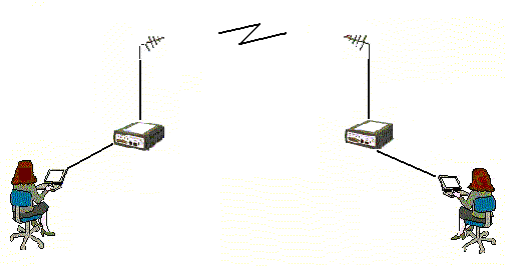Wireless communication with a variety of applications, remote data acquisition and control signal transmission compared with wired communications, such as fiber optic cable, cable, etc. with a simple construction, low cost, easy maintenance. Because wireless communication is the information by radio waves transmitted through the air to achieve, relatively speaking, wireless is very vulnerable to wave propagation in the air caused by the impact of reduced reliability. Therefore, wireless data transmission system to ensure reliability of data transmission is whether the key to the successful completion of application projects.
Wireless data transmission by the transceiver communication system (shown with radio, wireless bridge, etc.), antenna feed and the composition of the air channel, the project's preliminary design work, including the requirements of the application systems such as communications, transport interfaces (RS232, or Ethernet net), transfer rate (the amount of data and real-time), communication range (master and sub-station distribution) and the general terrain environment to be sure the station index, the main station and stations set up location, antenna type and set up height, one of the most critical the radio and antenna set up a high degree of technical indicators. In general, a simple theoretical calculation, as according to the terrain and distance requirements and the formula D = 4.12 (√ H + √ h) to determine the master station, set up sub-station height, according to the frequency band, distance and feeder length, radio reception error sensitivity factors and the formula Pr = Pt + Gt + Gr-Lt-Lr-Lo to determine the radio power, antenna gain.
As the site of the actual environment can not be totally flat, if the hills, buildings, trees, etc., in different ways affect the extent and spread of radio, and different work, such as long-wave band radio, shortwave, FM and microwave with a very different propagation characteristics, the theoretical calculation in the case of complex terrain there is no reference value. Therefore, the implementation of the project, it must be on-site testing.
1、The frequency band without interference test
Does not interfere with wireless data transmission system to normal operation of the premise.
Wireless data transmission system designed to select and determine the first frequency band, the Ministry of Information Industry of China to allow administration of radio spectrum for civilian work are 150MHz, 230MHz, 280 MHz, 350 MHz, 400 MHz, 800 MHz, 2.4GHz, 5.8GHz, etc., Depending on the specific types of business distribution. Wireless data transmission system is mainly distributed in 220~240MHz, 2.4~2.4835GHz frequency band and so on.
External signal to the wireless data transmission system interference will affect the radio receiver, a direct result of error. Mainly refers to the illegal use of the interference signal interference, harmonic interference, intermodulation interference, electrical noise interference.
The radio management application used to determine the frequency, the main station in the project requirements, set up sub-station location determination of whether the interference. Set the radio frequency matched antennas, feeder lines, the receiver is open for some time to know whether the interference. Shenzhen Huaxia Sheng companies such as using radio, read the received signal strength indicator (RSSI) value, there is no interference RSSI is-120dBm, RSSI value when there is interference>-120dBm, such as RSSI =- 90dBm, said interference signal field strength is -90 dB.
2、Use the device to receive signal strength test
Received signal field strength is sufficiently large wireless data transmission system to normal operation of the key.
RF signals received by radio the size of the system play a decisive role in whether the error. Received signal becomes smaller, there may have errors. Receiver sensitivity is a sign of the radio reception. Data communications products, receiver sensitivity is the bit error rate (BER) at 10-6, the radio reception field strength required value. Shenzhen Huaxia Sheng's X710 series, such as digital radio receiver sensitivity threshold of approximately-110dBm (BER ≤ 10-6).
According to the project requiring a simple set up master, sub-stations, control of the main station (or substation) launched in the sub-station (or master) can be read at one end to receive signal strength (RSSI) value. And thus determine the station's transmitter power, antenna gain. Environmental factors due to electrical interference, fixed-to-multipoint communications, radio signal strength received large than 10dB above the threshold can not guarantee transmission error. If one end is moving, due to spatial and temporal changes in the environment, especially in urban built-up environment, the received signal field strength there is the phenomenon of fast breakdown, drop of 20~30dB, this application requires a strong field in the radio receiver threshold than 30dB.
Receive signal strength test
3、the transmission bit error statistics
Error rate is the transmission of wireless data transmission system of quality indicators.
Advanced radio equipment operation can be conducted on the error statistics, such as Shenzhen Huaxia Sheng's X710 series of digital radio is able to start work after the statistical tests. According to statistics of the radio transceiver can read how many bytes of data, the right to receive and how many errors.
In short, the field test is to set up a reliable wireless data transmission system is an important program, especially in complex terrain, communication requirements of a wide range of circumstances, with the choice of equipment on-site interference testing, field testing and error statistics is necessary .

